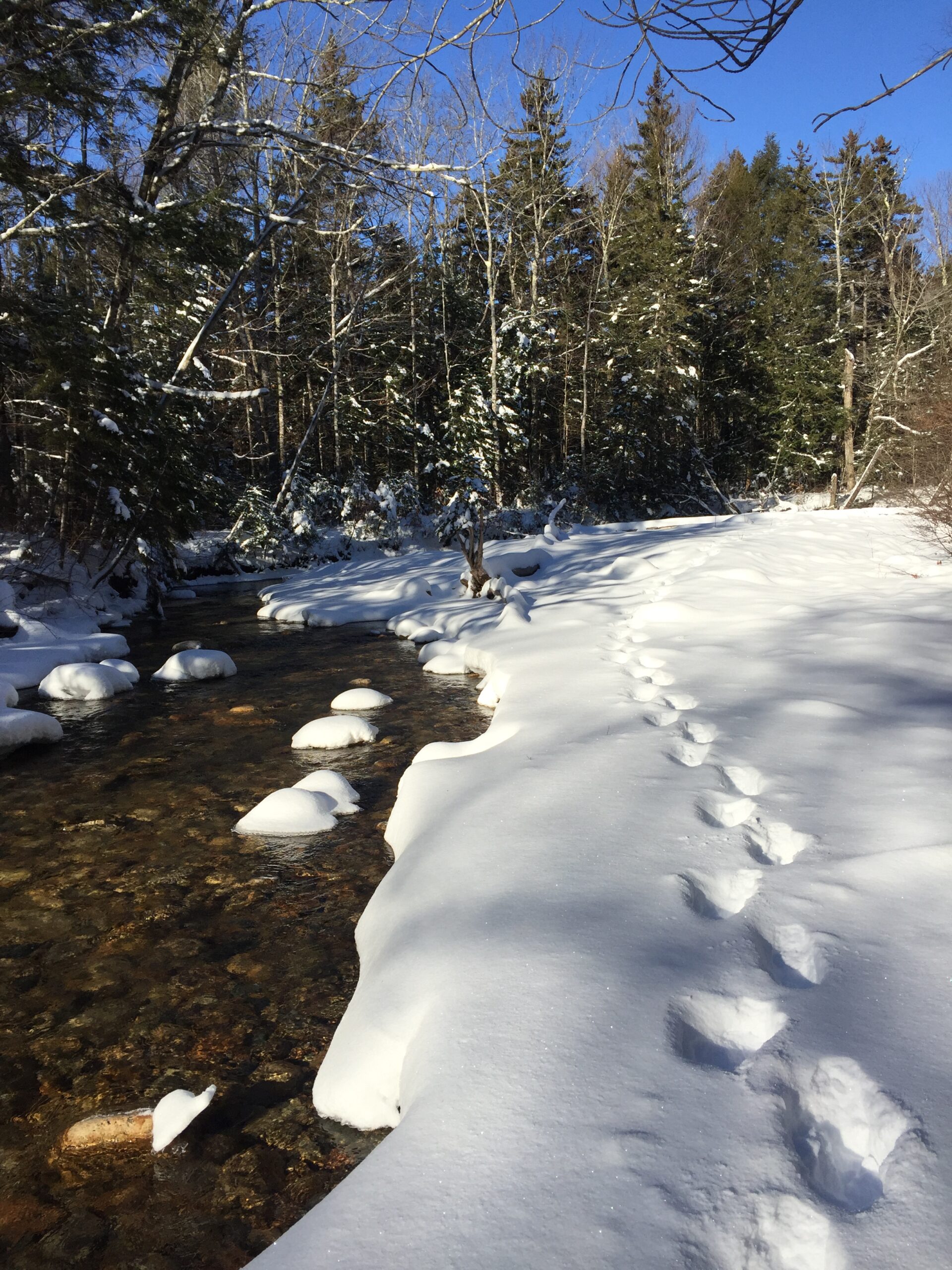It doesn’t take an epic hike to visit outdoor splendors. On recent cold, clear days I’ve taken some shorter walks to replenish my vitamin D, get some fresh air, and admire the woods and waters.
I must have walked past the turnoff for Big Pines path half a dozen times- it’s a short spur off the forest road that connects to many longer and steeper trails.
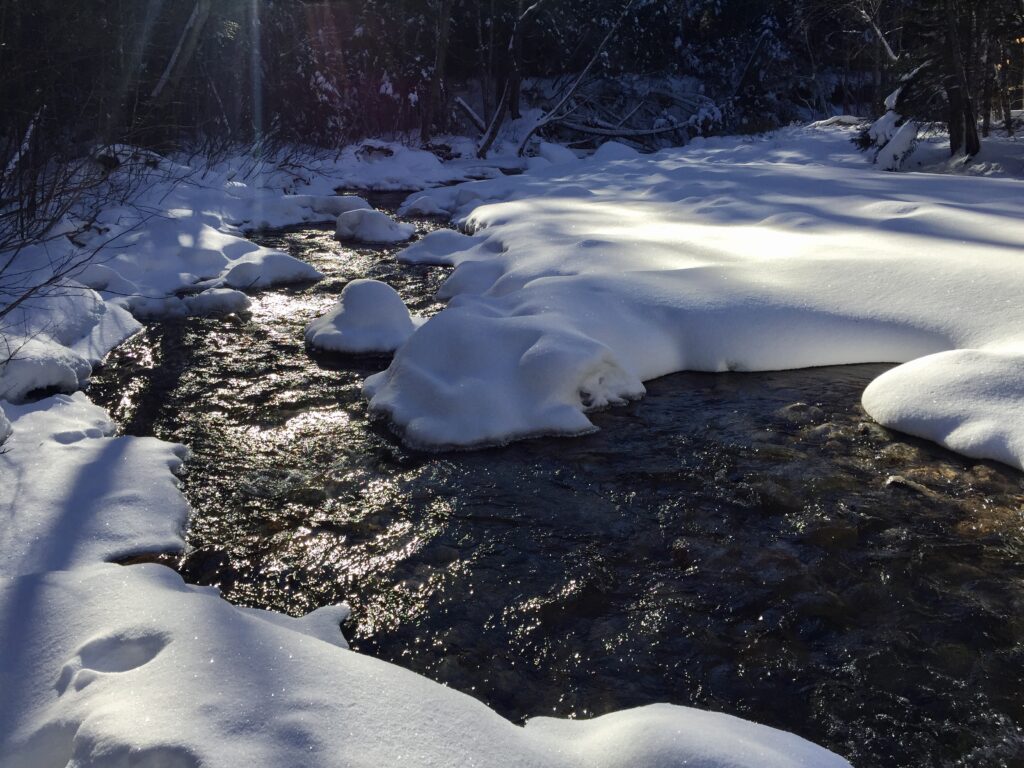
The trail leads back toward the Mad River, which was still flowing vigorously when I visited it.
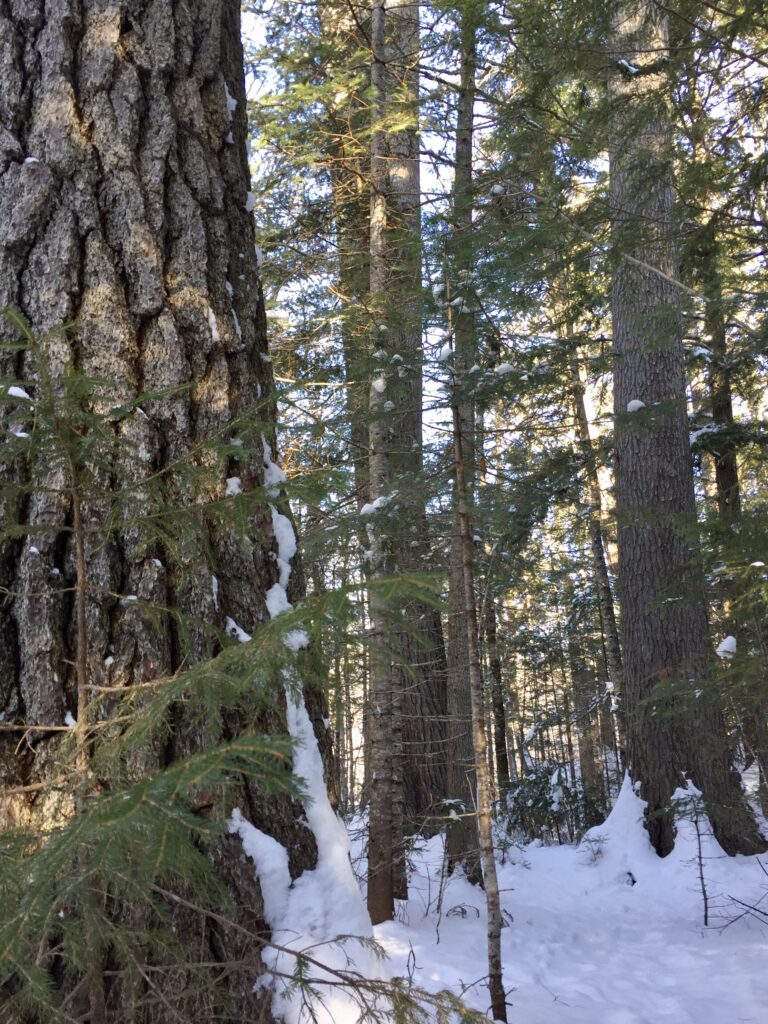
Just like it sounds, Big Pines path leads to a small grove of some of the biggest pine trees I’ve seen in the National Forest. The guide book1 identifies them as white pines. I would love to know how this grove was spared during the years of extensive commercial logging. They are not in a particularly remote or inaccessible area, and white pine has been valued for building lumber and ship masts since the earliest days of European colonization.
The next sunny day took me out of the National Forest to a small state park featuring a spectacular gorge of eroded granite.
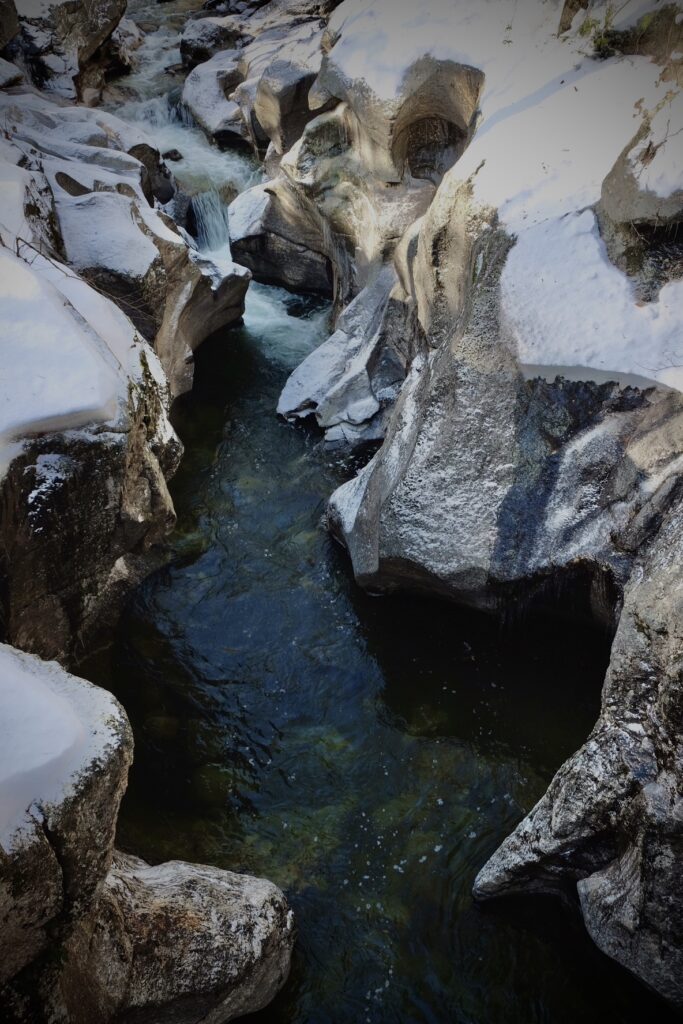
I’ve rhapsodized about geology before, but this spot is special because it’s pure granite. That means there were no soft basalt dikes where the water could rapidly carve a straight walled channel, and instead eroded the granite itself into sinuous, organic shapes reminiscent of the sandstone canyons of the Southwest.
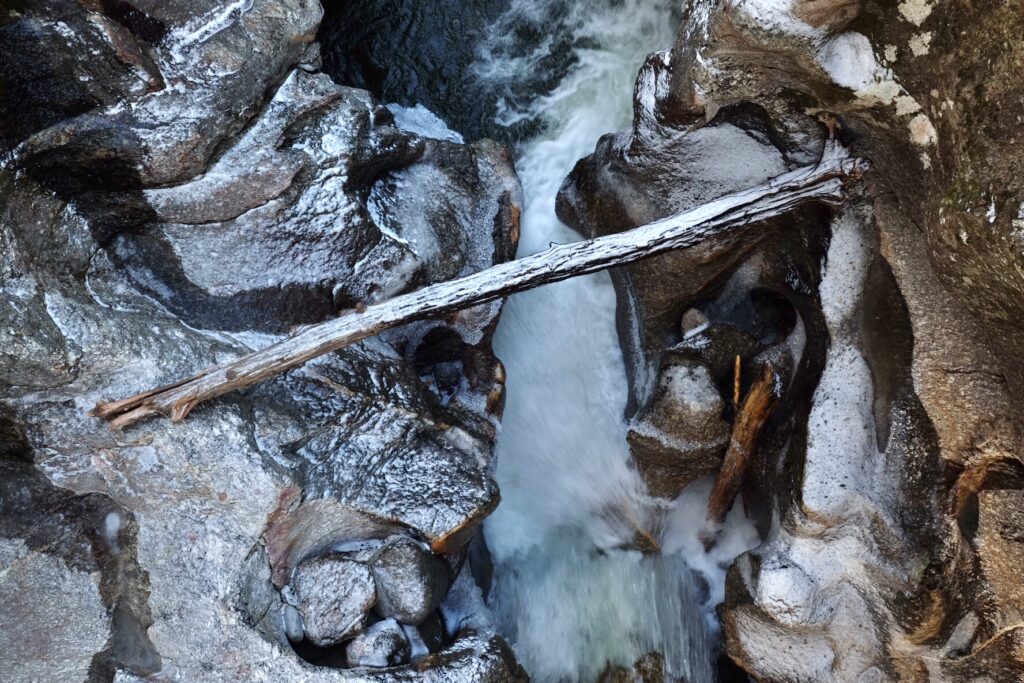

I would have enjoyed clambering around in the gorge, but the whole area was coated with a glaze of ice, and without proper safety gear, venturing onto icy rocks that all slant down toward the water seemed like a Very Bad Idea.
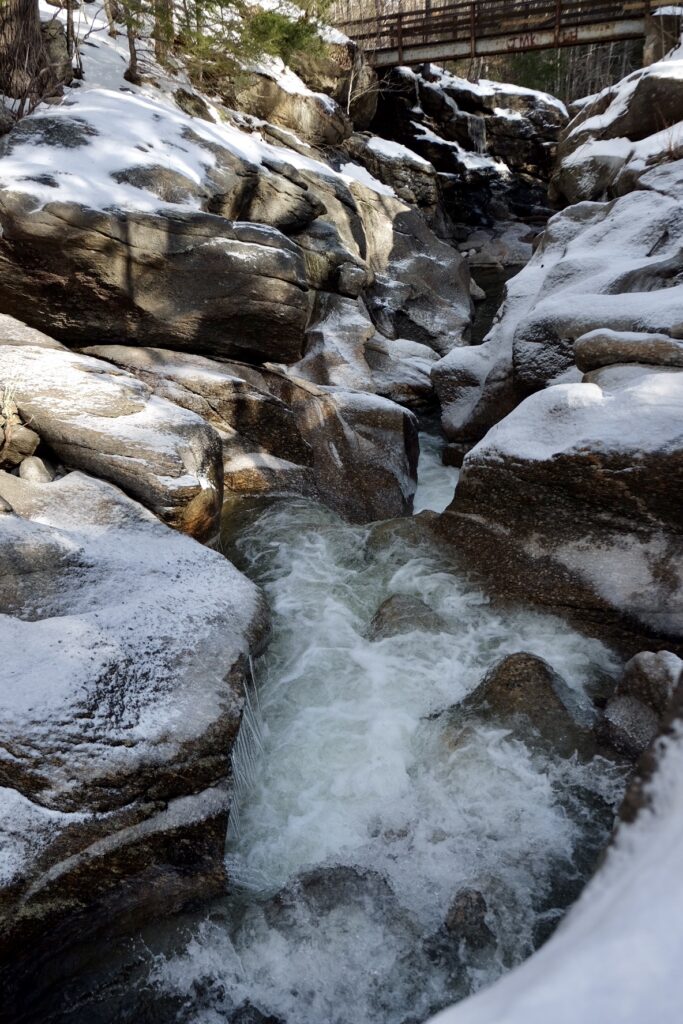
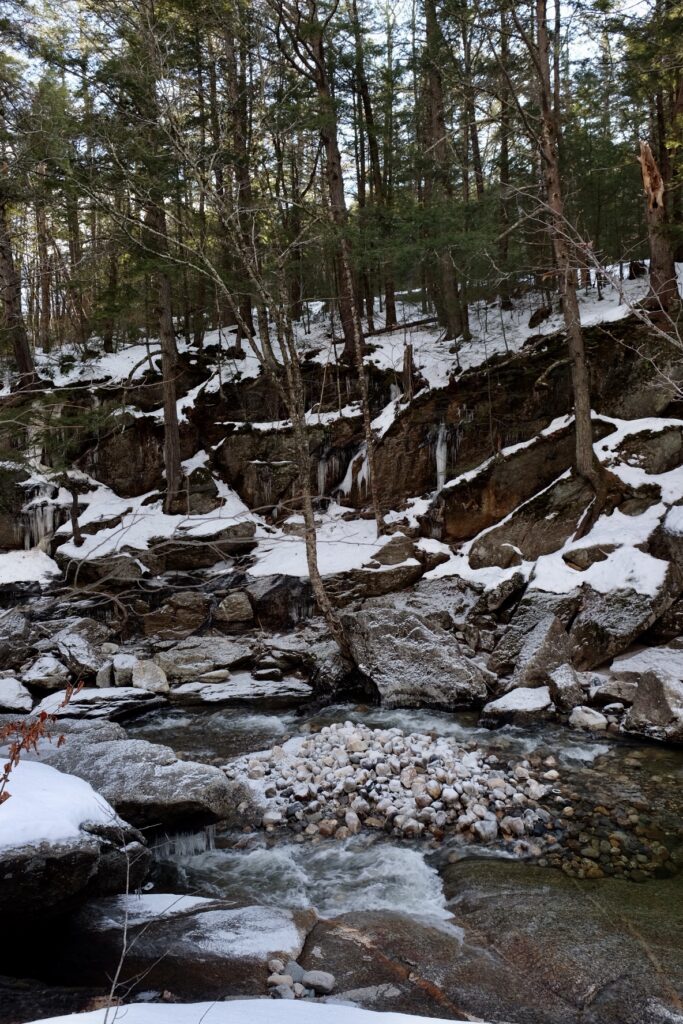
1 Smith, Stephen D. (editor) White Mountain Guide, 30th Edition 2017 Appalachian Mountain Club Books, Boston MA

